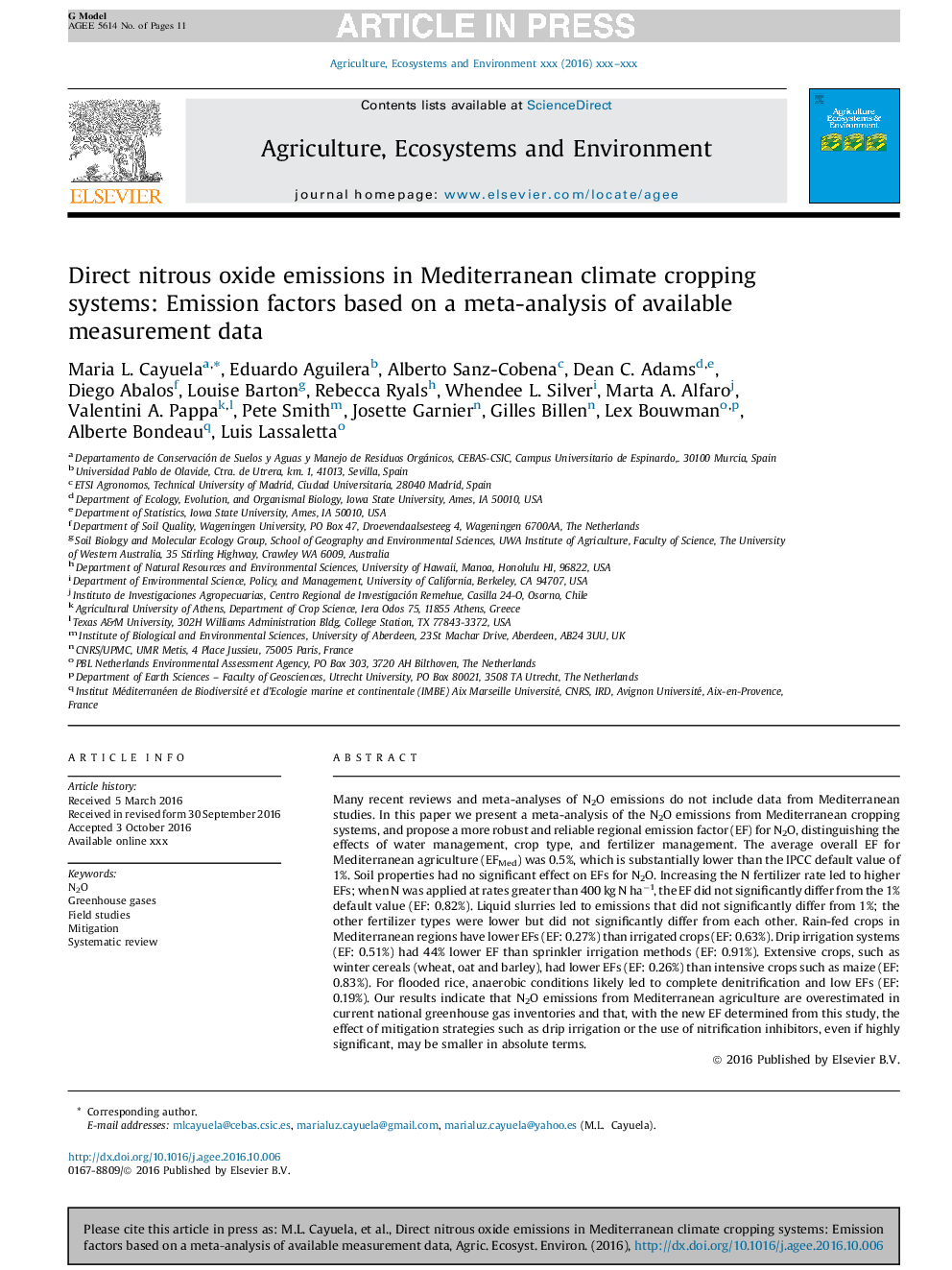| Article ID | Journal | Published Year | Pages | File Type |
|---|---|---|---|---|
| 5537954 | Agriculture, Ecosystems & Environment | 2017 | 11 Pages |
Abstract
Many recent reviews and meta-analyses of N2O emissions do not include data from Mediterranean studies. In this paper we present a meta-analysis of the N2O emissions from Mediterranean cropping systems, and propose a more robust and reliable regional emission factor (EF) for N2O, distinguishing the effects of water management, crop type, and fertilizer management. The average overall EF for Mediterranean agriculture (EFMed) was 0.5%, which is substantially lower than the IPCC default value of 1%. Soil properties had no significant effect on EFs for N2O. Increasing the N fertilizer rate led to higher EFs; when N was applied at rates greater than 400 kg N haâ1, the EF did not significantly differ from the 1% default value (EF: 0.82%). Liquid slurries led to emissions that did not significantly differ from 1%; the other fertilizer types were lower but did not significantly differ from each other. Rain-fed crops in Mediterranean regions have lower EFs (EF: 0.27%) than irrigated crops (EF: 0.63%). Drip irrigation systems (EF: 0.51%) had 44% lower EF than sprinkler irrigation methods (EF: 0.91%). Extensive crops, such as winter cereals (wheat, oat and barley), had lower EFs (EF: 0.26%) than intensive crops such as maize (EF: 0.83%). For flooded rice, anaerobic conditions likely led to complete denitrification and low EFs (EF: 0.19%). Our results indicate that N2O emissions from Mediterranean agriculture are overestimated in current national greenhouse gas inventories and that, with the new EF determined from this study, the effect of mitigation strategies such as drip irrigation or the use of nitrification inhibitors, even if highly significant, may be smaller in absolute terms.
Related Topics
Life Sciences
Agricultural and Biological Sciences
Agronomy and Crop Science
Authors
Maria L. Cayuela, Eduardo Aguilera, Alberto Sanz-Cobena, Dean C. Adams, Diego Abalos, Louise Barton, Rebecca Ryals, Whendee L. Silver, Marta A. Alfaro, Valentini A. Pappa, Pete Smith, Josette Garnier, Gilles Billen, Lex Bouwman, Alberte Bondeau,
